In Development this week (Vol. 140, Issue 1)
Posted by Seema Grewal, on 4 December 2012
Here are the highlights from the current issue of Development:
Gut feeling about Wnt doses
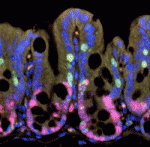 The intestinal epithelium continuously renews throughout life. Canonical Wnt signalling – a major player in this renewal – both controls intestinal epithelial proliferation and maintains intestinal stem cells. The existence of a gradient of β-catenin expression along the colonic crypt axis, with the highest β-catenin levels at the bottom where the intestinal stem cells reside, suggests that Wnt signalling might have dose-dependent roles in the colonic epithelium. On p. 66, Yasuhiro Yamada, Konrad Hochedlinger and colleagues use a β-catenin-inducible mouse model to investigate this possibility. High levels of β-catenin expression induce crypt formation but reduce cell proliferation among progenitor cells, they report, whereas lower levels have the opposite effect. Notably, Notch signalling is activated in the slow-cycling crypt cells produced by β-catenin overexpression, and treatment of β-catenin-expressing mice with a Notch inhibitor turns the slow-cycling cells into actively proliferating cells. Together, these results suggest that different levels of Wnt signalling, in cooperation with Notch signalling, control the differentiation and proliferation of the colonic epithelium.
The intestinal epithelium continuously renews throughout life. Canonical Wnt signalling – a major player in this renewal – both controls intestinal epithelial proliferation and maintains intestinal stem cells. The existence of a gradient of β-catenin expression along the colonic crypt axis, with the highest β-catenin levels at the bottom where the intestinal stem cells reside, suggests that Wnt signalling might have dose-dependent roles in the colonic epithelium. On p. 66, Yasuhiro Yamada, Konrad Hochedlinger and colleagues use a β-catenin-inducible mouse model to investigate this possibility. High levels of β-catenin expression induce crypt formation but reduce cell proliferation among progenitor cells, they report, whereas lower levels have the opposite effect. Notably, Notch signalling is activated in the slow-cycling crypt cells produced by β-catenin overexpression, and treatment of β-catenin-expressing mice with a Notch inhibitor turns the slow-cycling cells into actively proliferating cells. Together, these results suggest that different levels of Wnt signalling, in cooperation with Notch signalling, control the differentiation and proliferation of the colonic epithelium.
Micro-(RNA)managing muscle repair
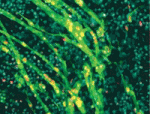 Following muscle injury, quiescent muscle stem cells (satellite cells) are activated and then proliferate and differentiate to regenerate myofibres. Wnt signalling regulates the differentiation of activated satellite cells, but what other factors control skeletal muscle regeneration? On p. 31, Francisco Naya and co-workers report that the transcription factor myocyte enhancer factor 2A (MEF2A) plays an essential role in skeletal muscle regeneration in adult mice. Myofibre formation is impaired in injured Mef2a knockout mice, the researchers report, and this impaired injury response is associated with downregulation of the Gtl2-Dio3 locus, the largest known mammalian microRNA (miRNA) cluster. Notably, a subset of the miRNAs in this locus represses secreted Frizzled-related proteins (sFRPs), which are inhibitors of Wnt signalling. Consistent with these data, sFRP expression is upregulated and Wnt activity is attenuated in injured Mef2a knockout muscle. These and other results suggest that miRNA-mediated modulation of Wnt signalling by MEF2A is required for muscle regeneration and suggest that targeting this pathway might enhance the regeneration of diseased muscle.
Following muscle injury, quiescent muscle stem cells (satellite cells) are activated and then proliferate and differentiate to regenerate myofibres. Wnt signalling regulates the differentiation of activated satellite cells, but what other factors control skeletal muscle regeneration? On p. 31, Francisco Naya and co-workers report that the transcription factor myocyte enhancer factor 2A (MEF2A) plays an essential role in skeletal muscle regeneration in adult mice. Myofibre formation is impaired in injured Mef2a knockout mice, the researchers report, and this impaired injury response is associated with downregulation of the Gtl2-Dio3 locus, the largest known mammalian microRNA (miRNA) cluster. Notably, a subset of the miRNAs in this locus represses secreted Frizzled-related proteins (sFRPs), which are inhibitors of Wnt signalling. Consistent with these data, sFRP expression is upregulated and Wnt activity is attenuated in injured Mef2a knockout muscle. These and other results suggest that miRNA-mediated modulation of Wnt signalling by MEF2A is required for muscle regeneration and suggest that targeting this pathway might enhance the regeneration of diseased muscle.
Epigenetic maintenance via DNA replication machinery
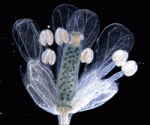 During development, cell type-specific epigenetic states must be duplicated accurately during mitosis to maintain cellular memory. The maintenance of epigenetic memory seems to involve the DNA replication machinery but is poorly understood. Here (p. 156), Yeonhee Choi and co-workers show that INCURVATA2 (ICU2), the catalytic subunit of DNA polymerase α in Arabidopsis, ensures the stable maintenance of histone modifications. Vernalisation, the acquisition of floral competence though exposure to prolonged cold, requires repression of Flowering Locus C (FLC) through accumulation of the histone mark H3K27me3. The researchers show that the missense mutant allele icu2-1 does not affect the recruitment of CLF, a component of polycomb repressive complex 2 (PRC2), and the resultant deposition of the H3K27me3 mark on the FLC locus. However, icu2-1 mutants do not stably maintain this epigenetic mark, which results in mosaic FLC de-repression after vernalisation. ICU2 also maintains repressive histone modifications at other PRC2 targets and at retroelements, and it facilitates histone assembly in dividing cells, which suggests a possible mechanism for ICU2-mediated epigenetic maintenance.
During development, cell type-specific epigenetic states must be duplicated accurately during mitosis to maintain cellular memory. The maintenance of epigenetic memory seems to involve the DNA replication machinery but is poorly understood. Here (p. 156), Yeonhee Choi and co-workers show that INCURVATA2 (ICU2), the catalytic subunit of DNA polymerase α in Arabidopsis, ensures the stable maintenance of histone modifications. Vernalisation, the acquisition of floral competence though exposure to prolonged cold, requires repression of Flowering Locus C (FLC) through accumulation of the histone mark H3K27me3. The researchers show that the missense mutant allele icu2-1 does not affect the recruitment of CLF, a component of polycomb repressive complex 2 (PRC2), and the resultant deposition of the H3K27me3 mark on the FLC locus. However, icu2-1 mutants do not stably maintain this epigenetic mark, which results in mosaic FLC de-repression after vernalisation. ICU2 also maintains repressive histone modifications at other PRC2 targets and at retroelements, and it facilitates histone assembly in dividing cells, which suggests a possible mechanism for ICU2-mediated epigenetic maintenance.
Otx2 switches early pluripotency states
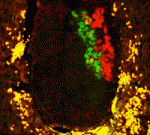 Mouse embryonic stem cells (ESCs) and epiblast stem cells (EpiSCs) correspond to the naïve ground state of the preimplantation epiblast and the primed state of the post-implantation epiblast, respectively. The ESC state is characterised by spontaneous, reversible differences among the ESCs in their susceptibility to self-renewal and differentiation signals. Here (p. 43), Antonio Simeone and colleagues investigate the mechanisms that control this metastable state and the transition from ESCs to EpiSCs. The researchers report that Otx2, a transcription factor that is required for brain development, is expressed in a large subset of ESCs and maintains the ESC metastable state by antagonising ground state pluripotency and promoting commitment to differentiation. Otx2 is also needed for ESC transition into EpiSCs, they report, and stabilises the EpiSC state in cooperation with BMP4 and Fgf2. Finally, they show that Otx2 is required for the differentiation of ESC-derived neural progenitors. Thus, Otx2 is an intrinsic determinant of the ESC state and of the ESC to EpiSC pluripotency transition.
Mouse embryonic stem cells (ESCs) and epiblast stem cells (EpiSCs) correspond to the naïve ground state of the preimplantation epiblast and the primed state of the post-implantation epiblast, respectively. The ESC state is characterised by spontaneous, reversible differences among the ESCs in their susceptibility to self-renewal and differentiation signals. Here (p. 43), Antonio Simeone and colleagues investigate the mechanisms that control this metastable state and the transition from ESCs to EpiSCs. The researchers report that Otx2, a transcription factor that is required for brain development, is expressed in a large subset of ESCs and maintains the ESC metastable state by antagonising ground state pluripotency and promoting commitment to differentiation. Otx2 is also needed for ESC transition into EpiSCs, they report, and stabilises the EpiSC state in cooperation with BMP4 and Fgf2. Finally, they show that Otx2 is required for the differentiation of ESC-derived neural progenitors. Thus, Otx2 is an intrinsic determinant of the ESC state and of the ESC to EpiSC pluripotency transition.
Sphingosine 1-phosphate stops muscle wasting
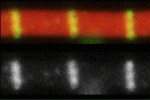 Duchenne muscular dystrophy – a lethal disease caused by dystrophin mutations – is characterised by age-dependent muscle wasting. Mario Pantoja and co-workers now report that increased intracellular sphingosine 1-phosphate (S1P) suppresses dystrophic muscle phenotypes in a Drosophila Dystrophin mutant (see p. 136). The researchers use localisation of Projectin protein (a titin homolog) in sarcomeres, as well as muscle morphology and movement assays, to show that reduction of wunen (a homolog of lipid phosphate phosphatase 3, which dephosphorylates several phospholipids in higher animals) suppresses dystrophic muscle defects; wunen is known to suppress a wing vein defect also seen in Drosophila Dystrophin mutants. Hypothesising that wunen-based suppression may be through elevation of S1P, which promotes cell proliferation and differentiation in muscle, the researchers use several genetic approaches and pharmacological agents to raise S1P levels in the dystrophic flies. In each case, increased S1P levels suppress dystrophic muscle phenotypes. The researchers suggest, therefore, that Drosophila could be used to identify small molecules that might suppress muscle wasting in human patients.
Duchenne muscular dystrophy – a lethal disease caused by dystrophin mutations – is characterised by age-dependent muscle wasting. Mario Pantoja and co-workers now report that increased intracellular sphingosine 1-phosphate (S1P) suppresses dystrophic muscle phenotypes in a Drosophila Dystrophin mutant (see p. 136). The researchers use localisation of Projectin protein (a titin homolog) in sarcomeres, as well as muscle morphology and movement assays, to show that reduction of wunen (a homolog of lipid phosphate phosphatase 3, which dephosphorylates several phospholipids in higher animals) suppresses dystrophic muscle defects; wunen is known to suppress a wing vein defect also seen in Drosophila Dystrophin mutants. Hypothesising that wunen-based suppression may be through elevation of S1P, which promotes cell proliferation and differentiation in muscle, the researchers use several genetic approaches and pharmacological agents to raise S1P levels in the dystrophic flies. In each case, increased S1P levels suppress dystrophic muscle phenotypes. The researchers suggest, therefore, that Drosophila could be used to identify small molecules that might suppress muscle wasting in human patients.
A Rosa future for Fucci cell-cycle indicators
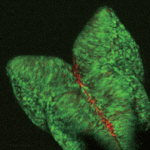 Visualising cell-cycle progression in living embryos is essential for improving our understanding of developmental processes. The fluorescent ubiquitylation-based cell-cycle indicator (Fucci), which was generated by fusing the ubiquitylation domains of Cdt1 and Geminin to different fluorescent proteins, has been used to label G1 and S/G2/M phase nuclei orange and green, respectively. Cell cycle dynamics during development have been studied in transgenic mice expressing Fucci under the control of the CAG promoter but Fucci expression levels are somewhat variable. Now, Shinichi Aizawa and colleagues (p. 237) describe two new mouse cell-cycle reporter lines that use Fucci2, a Fucci derivative that emits red and green fluorescence. The R26p-Fucci2 transgenic line uses the Rosa26 promoter and harbours the G1 and S/G2/M phase probes in a single transgene to ensure their co-inheritance. In the R26R-Fucci2 transgenic line, the two probes are incorporated into the Rosa26 locus conditionally to allow cell-cycle analysis in specific cell types. Time-lapse imaging experiments suggest that both reporter lines hold great promise for studying cell-cycle behaviour in vivo.
Visualising cell-cycle progression in living embryos is essential for improving our understanding of developmental processes. The fluorescent ubiquitylation-based cell-cycle indicator (Fucci), which was generated by fusing the ubiquitylation domains of Cdt1 and Geminin to different fluorescent proteins, has been used to label G1 and S/G2/M phase nuclei orange and green, respectively. Cell cycle dynamics during development have been studied in transgenic mice expressing Fucci under the control of the CAG promoter but Fucci expression levels are somewhat variable. Now, Shinichi Aizawa and colleagues (p. 237) describe two new mouse cell-cycle reporter lines that use Fucci2, a Fucci derivative that emits red and green fluorescence. The R26p-Fucci2 transgenic line uses the Rosa26 promoter and harbours the G1 and S/G2/M phase probes in a single transgene to ensure their co-inheritance. In the R26R-Fucci2 transgenic line, the two probes are incorporated into the Rosa26 locus conditionally to allow cell-cycle analysis in specific cell types. Time-lapse imaging experiments suggest that both reporter lines hold great promise for studying cell-cycle behaviour in vivo.
Plus…
Endoreplication and polyploidy: insights into development and disease
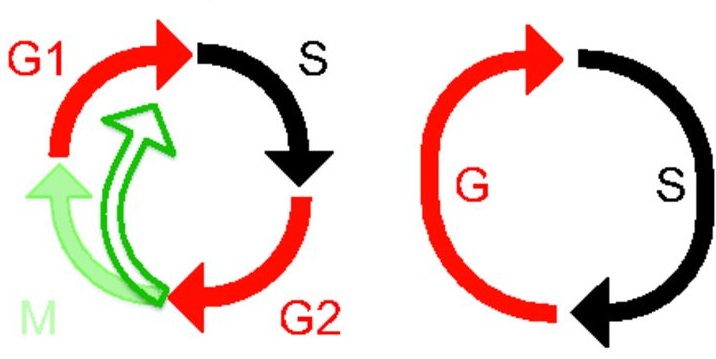 Polyploid cells have genomes that contain multiples of the typical diploid chromosome number and are found in many different organisms. As part of the “Development: The Big Picture” series, Fox and Duronio review the conserved mechanisms that control the generation of polyploidy and highlight studies that have begun to provide clues into the physiological function of polyploidy. See the Primer on p. 3
Polyploid cells have genomes that contain multiples of the typical diploid chromosome number and are found in many different organisms. As part of the “Development: The Big Picture” series, Fox and Duronio review the conserved mechanisms that control the generation of polyploidy and highlight studies that have begun to provide clues into the physiological function of polyploidy. See the Primer on p. 3
Click here to see other articles in the ‘Development: the Big Picture” series.
Cell polarity: models and mechanisms from yeast, worms and flies
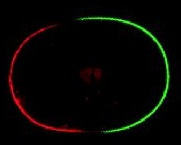 Determinants of cell polarity dictate the behaviour of many cell types during development. Recent work in yeast, worms and flies, reviewed here by Barry Thompson, has combined computer modelling with experimental analysis to reveal the mechanisms that drive the polarisation of such determinants. See the Review on p. 13
Determinants of cell polarity dictate the behaviour of many cell types during development. Recent work in yeast, worms and flies, reviewed here by Barry Thompson, has combined computer modelling with experimental analysis to reveal the mechanisms that drive the polarisation of such determinants. See the Review on p. 13


 (No Ratings Yet)
(No Ratings Yet)